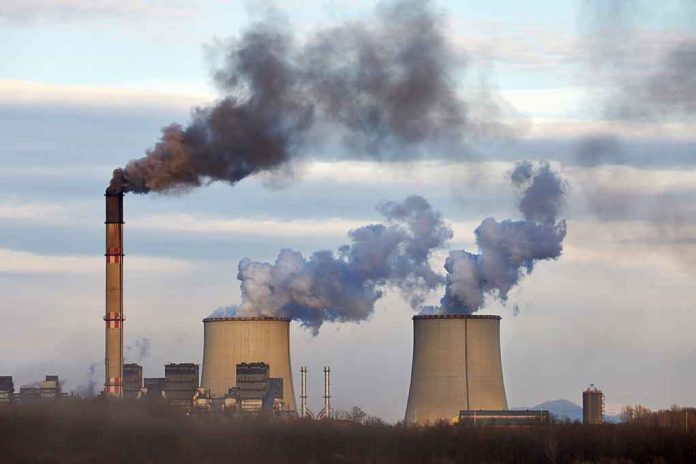
Russia’s plan to build eight nuclear reactors in Iran defies U.S. sanctions and deepens a growing anti-Western alliance that threatens to reshape global power dynamics.
Key Takeaways
- Russia has signed a contract to construct eight nuclear power plants in Iran, with four planned for the southern province of Bushehr.
- This nuclear cooperation represents a significant deepening of Russia-Iran relations following their military collaboration during the Ukraine conflict.
- The Bushehr facility, Iran’s only operational nuclear power plant completed by Russia in 2011, will be substantially expanded as part of Iran’s strategy to triple its nuclear energy capacity.
- Russia has positioned itself as a potential mediator between the U.S. and Iran on uranium enrichment issues, further complicating Western diplomatic efforts.
- Critics question whether the ambitious project will overcome significant financial and logistical challenges, pointing to Russia’s history of taking Iranian funds with minimal progress on nuclear projects.
Russia and Iran Forge Nuclear Partnership
Mohammad Eslami, President of the Atomic Energy Organization of Iran (AEOI), recently confirmed that Russia will construct eight nuclear power plants in Iran under a previously signed agreement. This development marks a significant expansion of Iran’s nuclear energy program, which currently features just one operational reactor at the Bushehr facility. Four of these new reactors will be built in Bushehr province, where Iranian companies are already constructing Units 2 and 3 at the existing plant. The announcement comes amid increasing isolation of both nations from Western powers and represents a clear defiance of U.S.-led sanctions.
“Russia is contracted to build eight nuclear power plants in Iran, including four in the southern city of Bushehr,” said Ebrahim Rezaei, Tehran’s National Security spokesman.
This massive nuclear expansion is part of Iran’s strategy to triple its nuclear power generation capacity. The Bushehr plant, completed by Russia in 2011, has been central to Iran’s civilian nuclear energy program and involves extensive cooperation with Russia’s state nuclear agency, Rosatom. Under the arrangement, Russia will supply Iran with nuclear fuel for a 1,000-megawatt reactor for ten years, with spent fuel returned to Russia to prevent plutonium separation – a crucial safeguard in the context of international non-proliferation concerns.
Geopolitical Implications
The nuclear deal strengthens what both countries have termed a “comprehensive strategic partnership” that has rapidly evolved since Russia’s invasion of Ukraine. Iran has provided Russia with military drones used against Ukrainian targets, while Russia has offered Iran advanced weapons systems and international diplomatic cover. This growing alliance represents a direct challenge to Western influence in the Middle East and creates a new power axis that threatens to redraw geopolitical lines across multiple regions. Both nations are leveraging their partnership to circumvent and withstand international sanctions.
“Iran is expanding its Bushehr nuclear power plant by building the second and third units of the facility,” according to the Arms Control Association, highlighting the ongoing development despite international concerns.
Russia’s offer to mediate between the United States and Iran on uranium enrichment issues adds another layer of complexity to an already volatile situation. By positioning itself as an intermediary in nuclear monitoring discussions, Moscow seeks to elevate its diplomatic standing while potentially undermining Western influence over Iran’s nuclear program. This mediation role could give Russia significant leverage in broader Middle East negotiations and complicate President Trump’s efforts to contain Iranian nuclear ambitions through a pressure campaign.
Challenges and Skepticism
Despite the grand announcements, serious questions remain about the viability of such an ambitious nuclear construction program. Critics point out that Russia has previously accepted substantial funds from Iran for nuclear projects that saw little tangible progress. The two additional reactors at Bushehr that are currently under construction have faced significant delays, raising doubts about the timeline for completing eight new facilities. Additionally, both countries face severe economic constraints due to international sanctions, potentially limiting their ability to finance and execute projects of this magnitude.
The expansion of Iran’s nuclear power capabilities, even for civilian purposes, raises concerns about potential parallel development of nuclear weapons technology. While the Bushehr facility operates under International “Atomic Energy Agency” (IAEA) standards, the broader nuclear cooperation between these sanctioned nations creates new monitoring challenges for international watchdogs. The U.S. has historically opposed the reactor project but has notably refrained from publicly criticizing this recent agreement, possibly signaling a strategic reassessment as the administration weighs its approach to both countries.





